The microscope is a vital scientific instrument enabling detailed observation of microscopic structures․ Its evolution has enhanced research and education, providing insights into the microcosm of life and materials․
1․1․ Overview of the Microscope and Its Importance
The microscope is a fundamental scientific tool used to magnify and study microscopic specimens․ Its significance lies in its ability to reveal details invisible to the naked eye, aiding in research, education, and diagnostics across biology, medicine, and materials science․
By enabling detailed observation of microstructures, microscopes have revolutionized our understanding of life and matter, making them indispensable in laboratories, classrooms, and industrial settings worldwide․
1․2․ Brief History and Evolution of Microscopes
The microscope’s origins trace back to the late 16th century in the Netherlands, with spectacle makers like Zacharias Janssen credited with its invention․ Early designs used single lenses, while later advancements introduced compound microscopes with objective and eyepiece lenses․
Over centuries, microscopes evolved significantly, from simple optical devices to complex instruments like fluorescence and electron microscopes, revolutionizing scientific research and discovery across various fields․
Base and Support
The base provides stability, ensuring the microscope remains steady during use․ It houses essential components like the light source and power switch, enabling efficient operation and control․
2․1․ Base: The Foundation of the Microscope
The base is the sturdy foundation of the microscope, providing essential support and stability․ It houses the light source and power switch, ensuring the microscope operates efficiently․ Constructed from durable materials, the base prevents vibrations and movement, maintaining focus and image clarity during observation․ Proper base construction is crucial for optimal performance and reliability․
2․2․ Power Switch: Function and Purpose
The power switch is a fundamental component located on the base of the microscope․ Its primary function is to control the illumination system, turning it on or off as needed․ This switch ensures the light source operates efficiently, providing consistent illumination for specimen observation․ Proper use of the power switch helps conserve energy and extends the lifespan of the microscope’s lighting system․
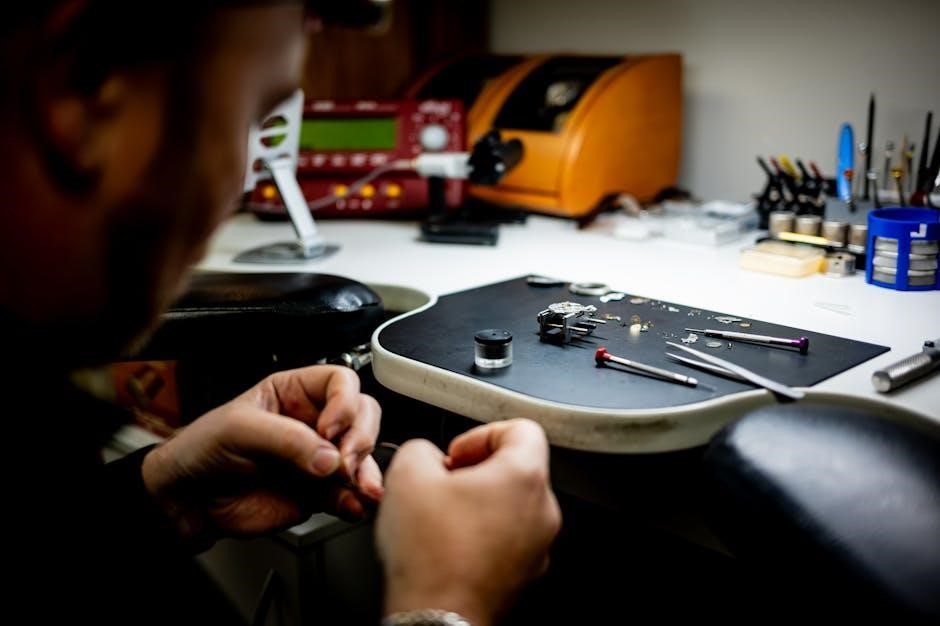
Arm and Body Tube
The arm connects the body tube to the base, providing structural support and stability․ The body tube houses optical components, aligning light and image for clear observation․
3․1․ Arm: Connecting the Base to the Body Tube
The arm serves as a sturdy connector between the base and the body tube, ensuring stability and alignment․ It supports the microscope’s structural integrity, allowing smooth movement and maintaining proper positioning of the optical components for accurate observation and focus․
3․2․ Body Tube: Housing the Optical Components
The body tube securely connects the eyepiece to the objective lenses, housing the optical components․ It maintains proper alignment and light transmission between these critical parts, ensuring clear and precise imagery during observation․ Its sturdy design supports the microscope’s functionality, allowing for efficient focus adjustments and reliable performance․
Illumination System
The illumination system provides light for observing specimens․ It includes a light source and condenser, focusing light onto the sample for clear visualization under magnification․
4․1․ Light Source: Providing Illumination for Observation
The light source is a crucial component of the microscope, emitting illumination required for observing specimens․ Modern microscopes often use LED or halogen bulbs, providing steady, adjustable light․ This ensures proper specimen visibility and prevents overheating, essential for maintaining sample integrity during extended observations․
4․2․ Condenser: Focusing Light onto the Specimen
The condenser is a critical component positioned below the stage, focusing light onto the specimen․ It ensures even illumination and enhances image clarity․ Adjustable apertures regulate light intensity, optimizing visibility and contrast for precise observations․ Proper alignment of the condenser is essential for achieving clear, high-quality images under magnification․

Stage and Specimen Holder
The stage is a platform for placing specimens, while the specimen holder secures the sample in place․ Together, they ensure stable observation under the microscope, maintaining specimen integrity․
5․1․ Stage: Platform for Placing Specimens
The stage serves as the platform where specimens are placed for observation․ It typically features a flat surface and may include clips or holders to secure the specimen slide․ This ensures the sample remains stable during microscopy, allowing for precise focus and clear visualization of the specimen’s details under the microscope lens․
5․2․ Specimen Holder: Securing the Sample
The specimen holder, often integrated into the stage, securely holds the sample in place․ It typically consists of metal clips or a mechanical clamp that gently grips the edges of the slide․ This ensures the specimen remains stationary, preventing movement during observation and maintaining focus, which is crucial for clear and accurate microscopy results․
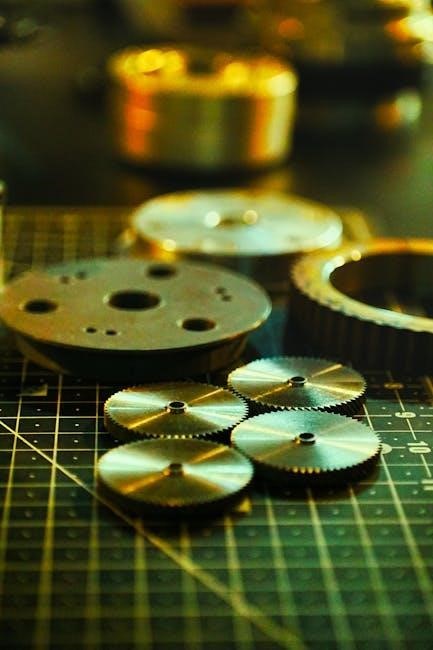
Focus Adjustments
Focus adjustments enable precise control over the clarity of the observed specimen․ The coarse focus knob sets the initial focus, while the fine focus knob refines it for optimal visibility․
6․1․ Coarse Focus Knob: Initial Focus Adjustment
The coarse focus knob is used to bring the specimen into approximate focus․ It moves the stage or objective lenses to establish initial clarity, preparing for finer adjustments․ This mechanism is essential for quickly narrowing in on the sample’s general position under the microscope, ensuring efficient observation and minimizing unnecessary fine-tuning efforts beforehand․
6․2․ Fine Focus Knob: Precise Focus Control
The fine focus knob allows for precise adjustments to achieve sharp, clear images․ It is used after the coarse focus knob to make minor movements, ensuring the specimen is perfectly focused without damaging the microscope or sample․ This knob is crucial for obtaining high-resolution images and maintaining the integrity of both the microscope and the specimen under observation․
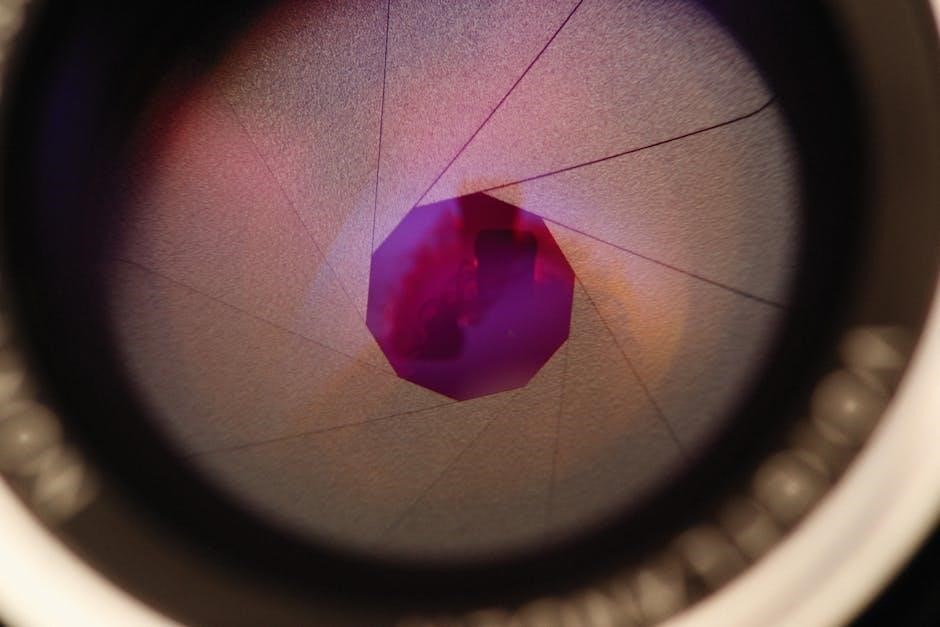
Objective Lenses and Revolving Nosepiece
Objective lenses magnify specimens, while the revolving nosepiece holds and switches between lenses․ Together, they enhance imaging precision and versatility in microscopy․
7․1․ Objective Lenses: Magnifying the Specimen
Objective lenses are crucial for magnifying specimens․ They are attached to the revolving nosepiece and come in different magnifications․ Each lens focuses light from the specimen, creating a real image․ High-quality objectives minimize distortion, ensuring clear images․ Proper alignment and maintenance are essential for optimal performance in microscopy․
7․2․ Revolving Nosepiece: Switching Between Objectives
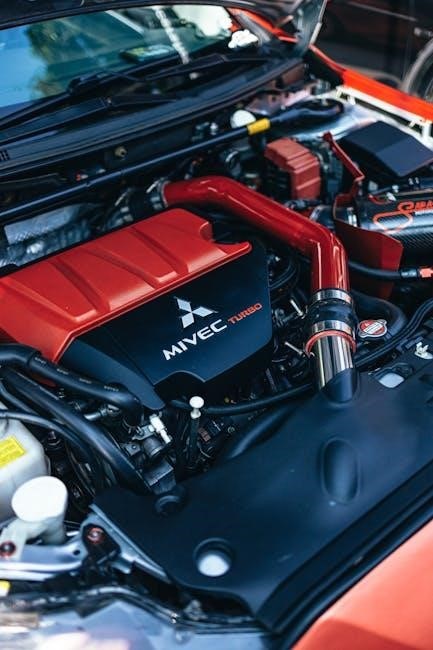
The revolving nosepiece holds multiple objective lenses and allows seamless switching between them․ By rotating the nosepiece, users can change magnification without disturbing the specimen․ This mechanism ensures efficient and precise transitions, maintaining focus and facilitating detailed observation under different magnifications․
Eyepiece (Ocular Lens)
The eyepiece, or ocular lens, is positioned at the top of the microscope․ It magnifies the image produced by the objective lens, allowing users to view enlarged specimens clearly․
8․1․ Eyepiece Function: Viewing the Magnified Image
The eyepiece, or ocular lens, plays a crucial role in magnifying the image produced by the objective lens․ Positioned at the top, it allows users to observe specimens with enhanced clarity․ The eyepiece works in conjunction with the objective lens to provide a detailed and enlarged view of the sample, making microscopic structures visible to the naked eye․ Proper adjustment ensures optimal viewing experiences․
8․2․ Diopter Adjustment: Customizing the View
The diopter adjustment is a control knob on binocular microscopes, allowing users to customize the view․ It fine-tunes focus for each eyepiece, accommodating differences in vision․ This feature ensures both eyes see a synchronized image, optimizing clarity․ Proper adjustment is essential for a comfortable viewing experience and achieving sharp focus․ It enhances overall microscope functionality․
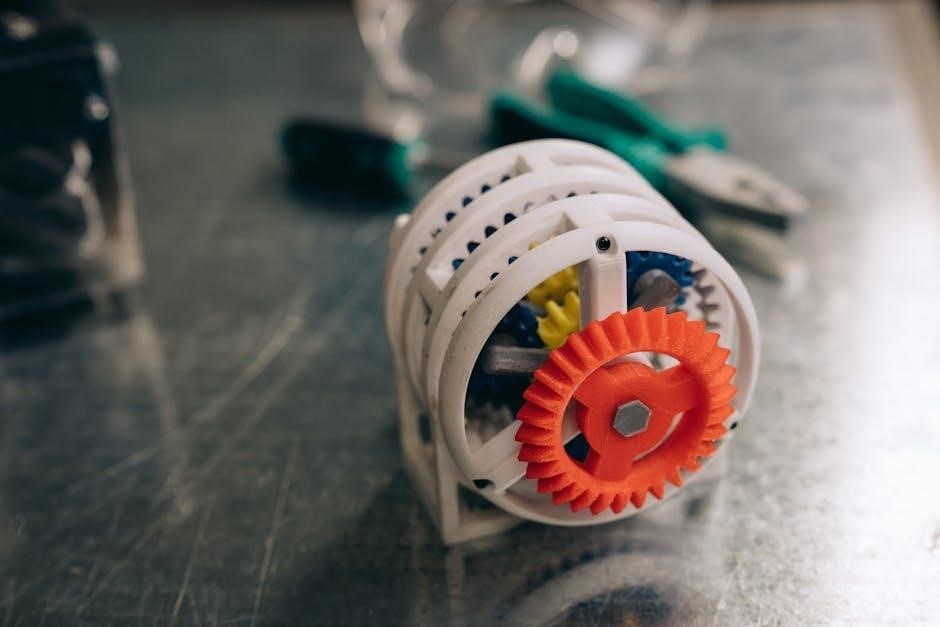
Additional Components
Additional components like the diaphragm, Abbe condenser, and optional attachments enhance functionality․ These parts regulate light, improve clarity, and expand the microscope’s capabilities for advanced observations․
9․1․ Diaphragm: Regulating Light Intensity
The diaphragm is a crucial component located beneath the stage․ It regulates the amount of light entering the microscope by adjusting its aperture, ensuring optimal illumination for clear observations․ This feature helps in managing light intensity to prevent overexposure and maintain image quality, making it essential for precise specimen analysis and visualization․
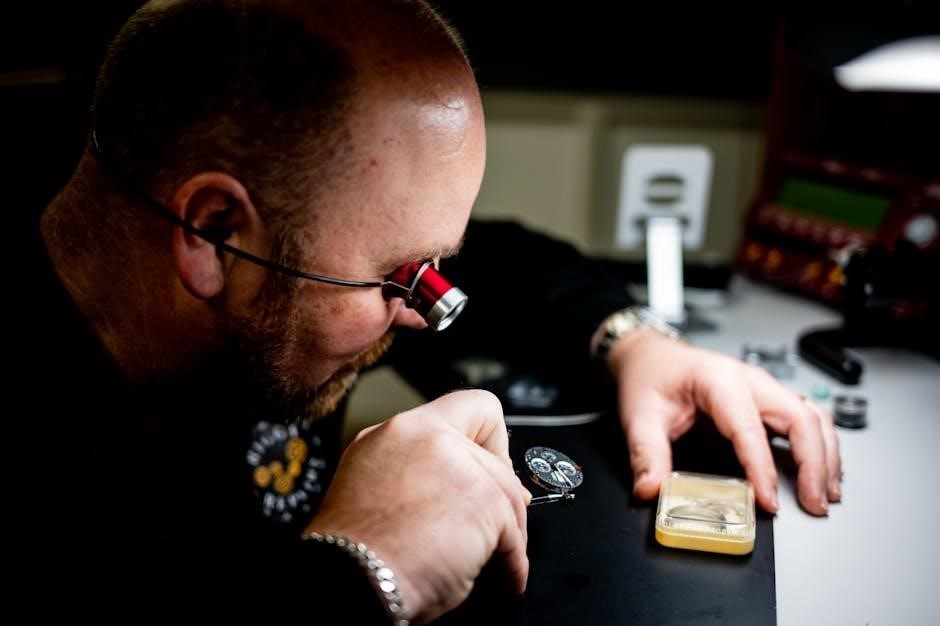
9․2․ Abbe Condenser: Enhancing Image Clarity
The Abbe condenser is a specialized lens system positioned beneath the stage․ It focuses and directs light onto the specimen, enhancing image clarity and contrast․ By optimizing light transmission, it reduces glare and improves resolution, ensuring sharp and detailed observations․ Proper alignment of the Abbe condenser is essential for achieving high-quality microscopy results․
9․3․ Optional Attachments: Digital Cameras and More
Digital cameras and adapters can be attached to microscopes for capturing images or videos․ These accessories enhance documentation and sharing capabilities․ Optional attachments like measurement scales or specialized stages further expand functionality, catering to advanced or specific needs in microscopy․ They provide versatility and modernize traditional microscope usage, making it more efficient and integrated with digital tools․
Types of Microscopes
Microscopes vary in design and functionality, including compound light, stereo, fluorescence, and electron microscopes․ Each type serves specific purposes, from basic observation to advanced scientific research․
10․1․ Compound Light Microscope
The compound light microscope is the most common type, widely used in biology and medicine․ It features a base, arm, and body tube housing eyepiece and objective lenses․ The stage holds specimens, while the light source and condenser provide illumination․ Coarse and fine focus knobs adjust clarity․ Optional digital cameras enhance functionality for detailed imaging and analysis․
10․2․ Stereo Microscope
The stereo microscope provides a three-dimensional view of specimens, ideal for dissecting and examining large or solid objects․ Unlike compound microscopes, it uses two separate optical paths to create binocular vision․ Often used in biology, quality control, and industrial applications, it offers lower magnification but greater depth perception, making it perfect for detailed surface inspections and manipulating small structures․
10․3․ Fluorescence Microscope
The fluorescence microscope uses ultraviolet light to illuminate specimens labeled with fluorescent compounds․ These compounds emit light at specific wavelengths, enabling researchers to study cell structures and biological processes in detail․ Widely used in biology and medicine, it offers high-contrast imaging for specific molecular studies, making it invaluable for analyzing cellular dynamics and diagnosing diseases․
10․4․ Electron Microscope
The electron microscope uses a focused beam of electrons to produce high-resolution images of specimens․ It offers superior magnification compared to light microscopes, making it ideal for studying nanoscale structures․ Common types include transmission (TEM) and scanning (SEM) electron microscopes, used in materials science, biology, and nanotechnology to analyze surface and internal structures with precision, often requiring specimens to be in a vacuum environment․
Maintenance and Care
Regular cleaning with soft cloths and avoiding harsh chemicals ensures longevity․ Store the microscope in a dry, secure location to prevent damage and rust․ Proper transport in padded cases safeguards components during movement, maintaining optical clarity and functionality for precise observations․
11․1․ Cleaning the Microscope
Cleaning involves using soft, lint-free cloths and mild soap solutions to wipe down external surfaces․ Lens tissues are recommended for optical parts to prevent scratches․ Avoid harsh chemicals or abrasive materials․ Regular cleaning prevents dust buildup and maintains clarity․ Always clean in a well-lit area to ensure thoroughness․ Proper cleaning is essential for preserving the microscope’s functionality and accuracy․
11․2․ Proper Storage and Transport
Store the microscope in a dry, cool place, away from direct sunlight․ Use a protective cover to prevent dust accumulation․ During transport, secure the microscope in a sturdy case with padding to avoid movement․ Avoid sudden impacts or tilting to protect delicate components․ Proper storage and transport ensure the microscope remains functional and maintains its optical precision over time․
The microscope is an essential tool in science and education, offering insights into the microscopic world․ Understanding its parts and functions ensures optimal use and maintenance, fostering scientific discovery and learning across various fields․
12․1․ Summary of Key Components
The microscope comprises essential parts, each serving a unique function․ The base provides stability, while the arm connects to the body tube, housing optical elements․ The stage holds specimens, and focus knobs adjust clarity․ Objective lenses magnify samples, and the eyepiece displays images․ The illumination system, condenser, and diaphragm regulate light, ensuring optimal viewing conditions for precise observations․
12․2․ Importance of Understanding Microscope Parts
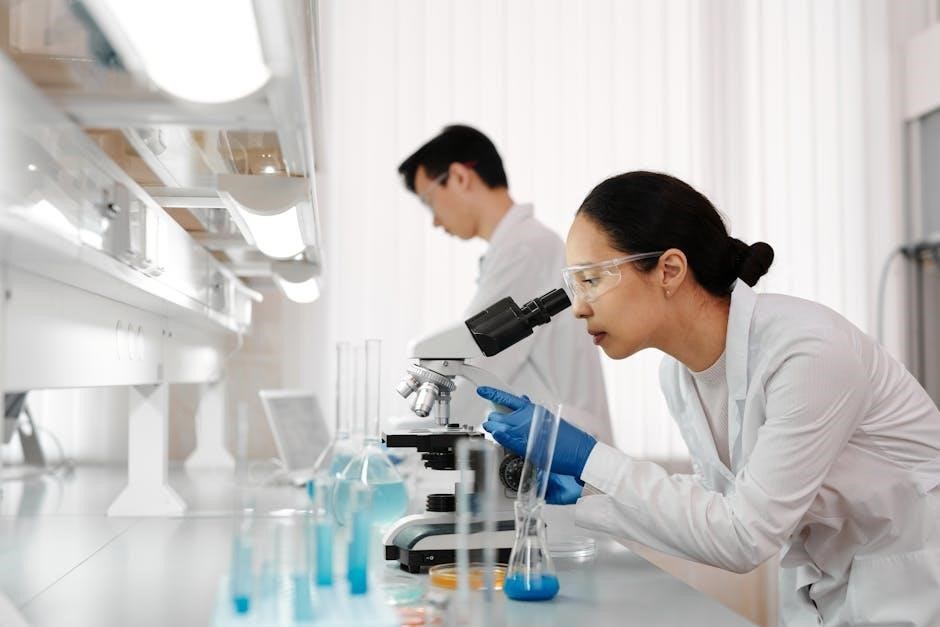
Understanding the components of a microscope is crucial for proper use, maintenance, and troubleshooting․ Knowledge of each part’s function ensures accurate observations, prevents damage, and extends the microscope’s lifespan․ It also enhances the ability to optimize settings for different specimens, making microscopy more effective and efficient in scientific, educational, or diagnostic settings․


